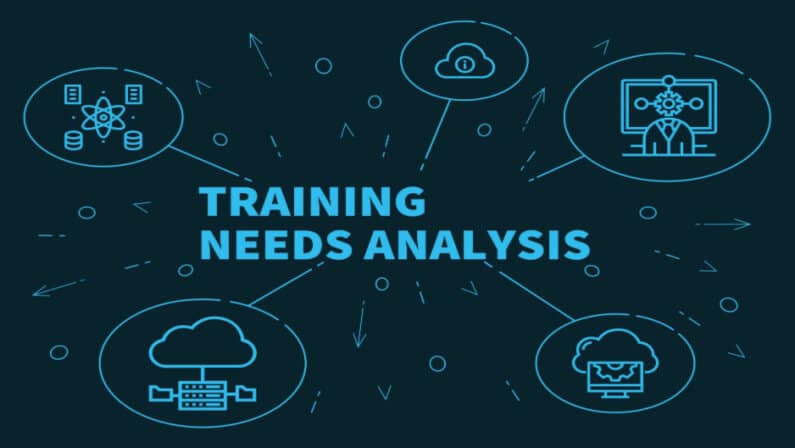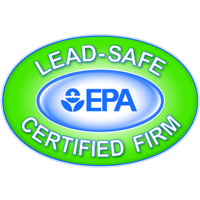Are you looking for ways to unlock the hidden potential of your employees? Training needs analysis is a great way to do just that. By focusing on specific areas and creating tailored development plans, you can get the most out of your team members’ skills and resources.
In this essential guide, we’ll cover everything you need to know about training needs analysis–from why it’s essential all the way through the actual process itself. So if you’re ready to find those untapped possibilities and turn them into real results, read on!
What is a training needs analysis?
Training needs analysis (TNA) is an important process that is used to identify how best to develop and equip your workforce with the necessary knowledge and skills to achieve organizational success. The goal of a TNA is to identify development opportunities, create tailored training plans, and measure how successful the implemented measures are.
Why conduct a training needs analysis?
Training needs analysis provides invaluable insights into how your business can best develop its workforce. It allows you to identify any performance gaps and disparities in knowledge and skills, and how these can be addressed through tailored training programs.
By assessing the current abilities of staff members and their future development needs, it becomes easier to create a structured plan that ensures everyone is constantly improving and becoming more productive. ABC Safety Solutions can help your business in Houston conduct a training needs analysis.
Why is training needs analysis important?
Training needs analysis is important because it helps identify the gaps in the knowledge and skills of your employees. This allows you to create tailored plans for learning and development that can ensure everyone is improving their knowledge base, performance, and productivity.
By assessing both the current abilities of staff members and their future development needs, an organization can stay competitive by having a constantly updated workforce on relevant topics related to the business.
Training needs analysis also ensures that resources are being used effectively when creating these development plans. This can help businesses cut costs while still making sure their employees have access to the latest information needed for success.
How a Business Benefits from Training Needs Analysis
Businesses benefit from training needs analysis in a number of ways, such as:
You will solve issues before they happen.
By conducting a training needs analysis, you’ll be able to identify potential problems before they arise and ensure that your employees are equipped to handle the tasks at hand. This will help you avoid costly errors and improve overall efficiency.
You will improve workplace safety.
By conducting a training needs analysis, you can identify areas where employees may require additional training, such as the proper use of safety equipment like safety harnesses. This can help ensure that your workforce is equipped with the knowledge and skills to work safely and reduce the risk of accidents or injuries.
You will motivate employees.
Offering different kinds of training opportunities to employees can be a great way to increase employee engagement, morale, and motivation. By tailoring development plans based on the needs of your workforce, you can ensure that everyone is engaged and motivated by their work.
You will uncover new training needs.
Training needs analysis can help uncover new training needs that may have previously been overlooked or underestimated. For example, by assessing the current abilities of staff members and how they use their skills in practice, an organization can identify how their employees could benefit from further training.
This could include anything from brushing up on technical skills to developing interpersonal communication strategies. By uncovering these needs, businesses can stay ahead of the curve and ensure that their employees are always equipped with the latest knowledge and skills required for success.
You will create impactful training plans.
Creating impactful training plans is essential for ensuring that employees have the knowledge and skills needed to be successful in their roles. In order to create an effective plan, an organization needs to have a thorough understanding of what their employees need in terms of training and development.
By conducting a training needs analysis, businesses can better identify how to tailor plans that meet the specific needs of their workforce. This will ensure that resources are being used in the most efficient way possible.
You will stay focused on business goals.
Training needs analysis can help a business stay focused on its goals by enabling them to create tailored training opportunities that are designed to help employees reach their full potential. This helps ensure that the workforce is equipped with the most up-to-date skills and knowledge necessary for success.
By understanding how staff members are currently performing, as well as how they could improve, an organization can create training sessions that are designed to help them reach their desired outcomes and objectives.
You will provide the right training to the right people.
Doing a training needs analysis helps you give the right people the right type of training. This means that everyone will get the help they need to be successful in their job and reach their organizational goals.
You will have better-performing employees.
When an organization conducts training needs analysis, it can ensure that its employees are better equipped to perform in their respective roles.
By understanding the needs and abilities of their workforce, they can create more impactful training plans that ensure employees have all the information required to do their job successfully. This will lead to improved performance, increased efficiency, and better job satisfaction.
You will save resources, time, and money.
When a business engages in training needs analysis, they are able to identify areas where money and resources can be saved.
By understanding how their employees are currently performing and how they could improve, an organization can create more effective training plans that use fewer resources. This helps to reduce costs while ensuring that employees are equipped with the skills and knowledge needed to be successful in their roles.
How to Conduct a Training Needs Analysis
Conducting a training needs analysis is vital for ensuring that businesses have the best-equipped workforce possible. Here are some key steps to consider when conducting a training needs analysis.
Determine your goals
When conducting a training needs assessment, the first step is to determine the goals of the organization and how they can be achieved through employee training. This will involve analyzing the current skills and knowledge of staff members, as well as how those skills are being utilized in practice.
It is important to identify how employees can improve their performance in order to reach the desired outcomes of the business.
Run a cost analysis
Running a cost analysis is a crucial step in conducting a training needs analysis. A cost analysis allows your organization to evaluate how much it would cost to train staff in the desired area. This may include how much money and resources would need to be invested in order to provide employees with the necessary training.
Select candidates
When selecting candidates for training needs analysis, it is important to consider how individual employees can benefit from a successful training. It may be beneficial to select employees who have the potential to be leaders in the organization or those who could benefit from certain skills training.
Identify necessary skills
When identifying the necessary skills, businesses should consider how these will help employees reach their goals. This involves understanding how those skills can be applied to their current roles and how they can be used to help the organization reach its objectives.
Assess skill levels
Expounding on how to assess skill levels is an essential step in conducting a training needs analysis. This involves looking at how individual employees are performing in their current roles and how they can improve. This is done by looking at how employees are using their skills and how those skills can be applied to reach the desired goals of the business.
Find the experts
When finding the experts to train your team, it is crucial to choose individuals who are knowledgeable and experienced in the field. They should also have a good understanding of how the organization works and how its employees can best be trained to achieve their goals. Moreover, they should have the necessary skills and aptitude to assess the skills of individual employees properly.
When seeking experts to train your team, it’s essential to select individuals who not only possess deep knowledge and experience but also understand the intricacies of organizational operations. Similarly, for NDIS providers, leveraging client management software tailored for NDIS can be a game-changer, empowering them to train and manage their teams effectively while ensuring exceptional client support.
Design and deliver your training
When designing and delivering training for a needs analysis, it is essential to ensure that the training focuses on specific skills or knowledge that employees need in order to reach their goals.
This should be done in a way that is engaging and effective, and that takes into account the individual needs of each employee. Additionally, the training should be tailored to how the organization works and how it can best meet its goals through employee development.
Regroup, review, refine
Regrouping, reviewing, and refining are crucial steps in conducting a training needs analysis. Regrouping involves taking a step back to assess how the training went and how employees responded to it.
Reviewing involves reflecting on how employees are now better equipped to meet the goals of the organization. Refining involves making changes to how the training is delivered in order to best meet the needs of employees.
Cost of Training Needs Analysis
The cost of training needs analysis varies depending on the type and scope of the analysis. Generally, the cost will include fees for the experts conducting the analysis, as well as any software or materials that are necessary to carry out the evaluation.
There may also be additional costs associated with travel, accommodations, and other overhead expenses. The total cost of a training needs assessment will depend on how comprehensive analysis is required.
Conduct TNA Now
Conducting a training needs analysis is an important step in ensuring that employees have the skills and knowledge necessary to reach their goals. It involves assessing how employees perform, identifying what skills they need to develop, and finding experts who can help design and deliver successful training programs.
With this information, businesses can make informed decisions about how best to provide their staff with the resources needed for them to succeed. By taking the time to invest in conducting a thorough training needs analysis, organizations will be able to reap long-term rewards from having well-trained and efficient employees. Contact ABC Safety Solutions for the best compliance and safety solutions in Houston.













